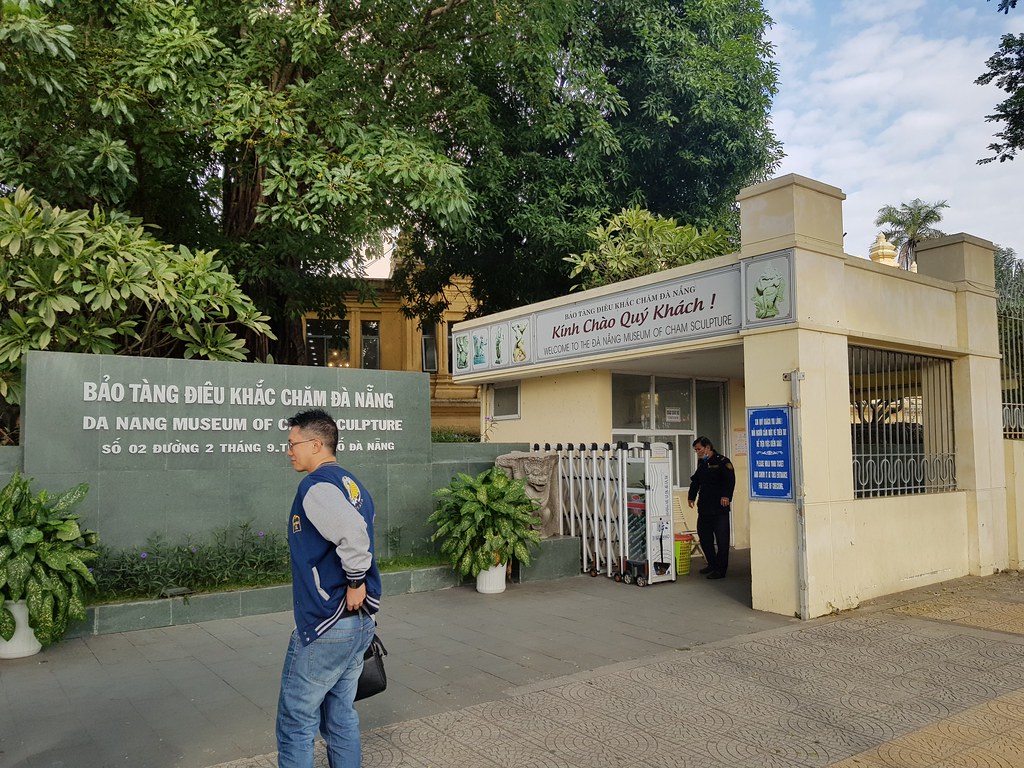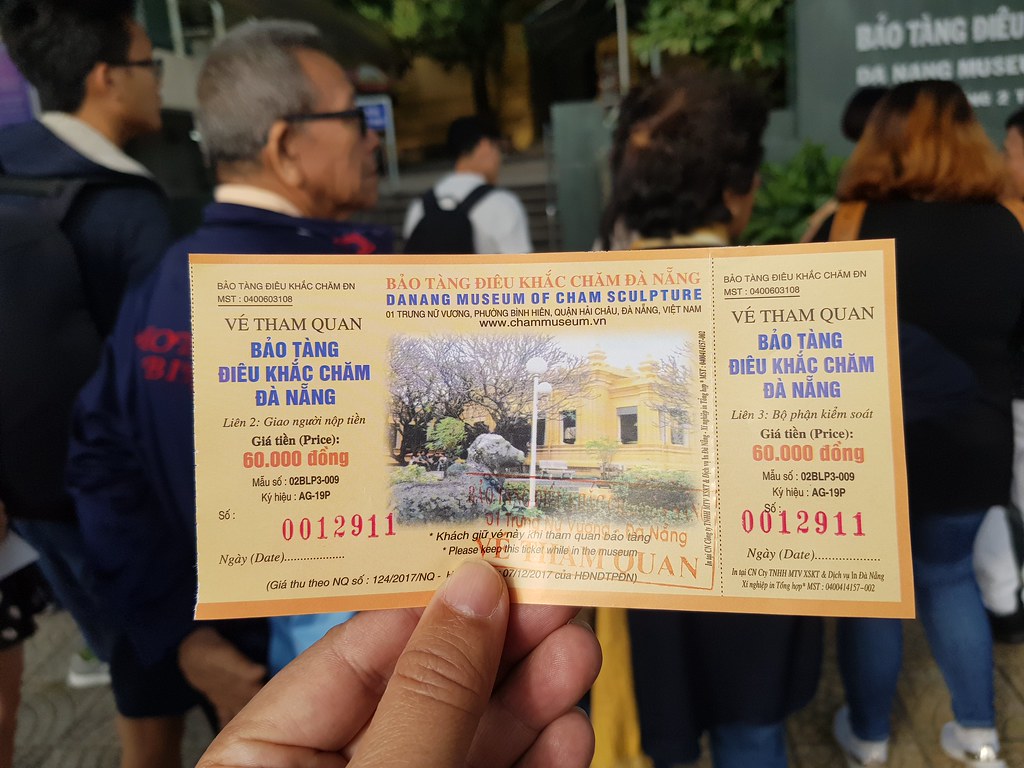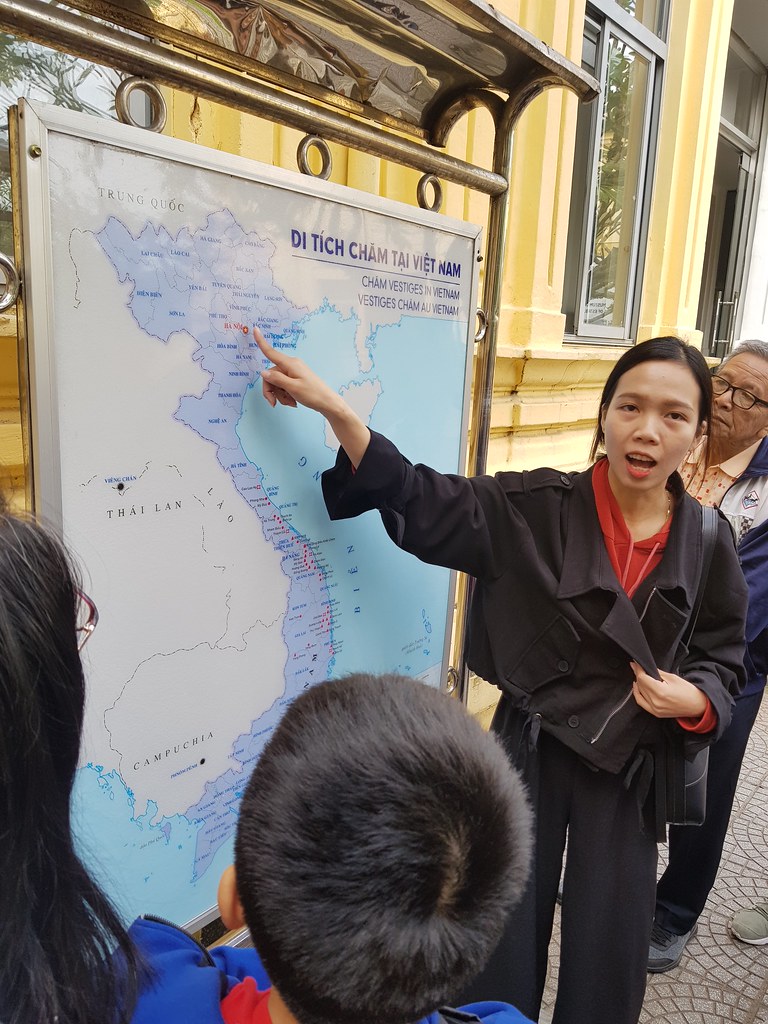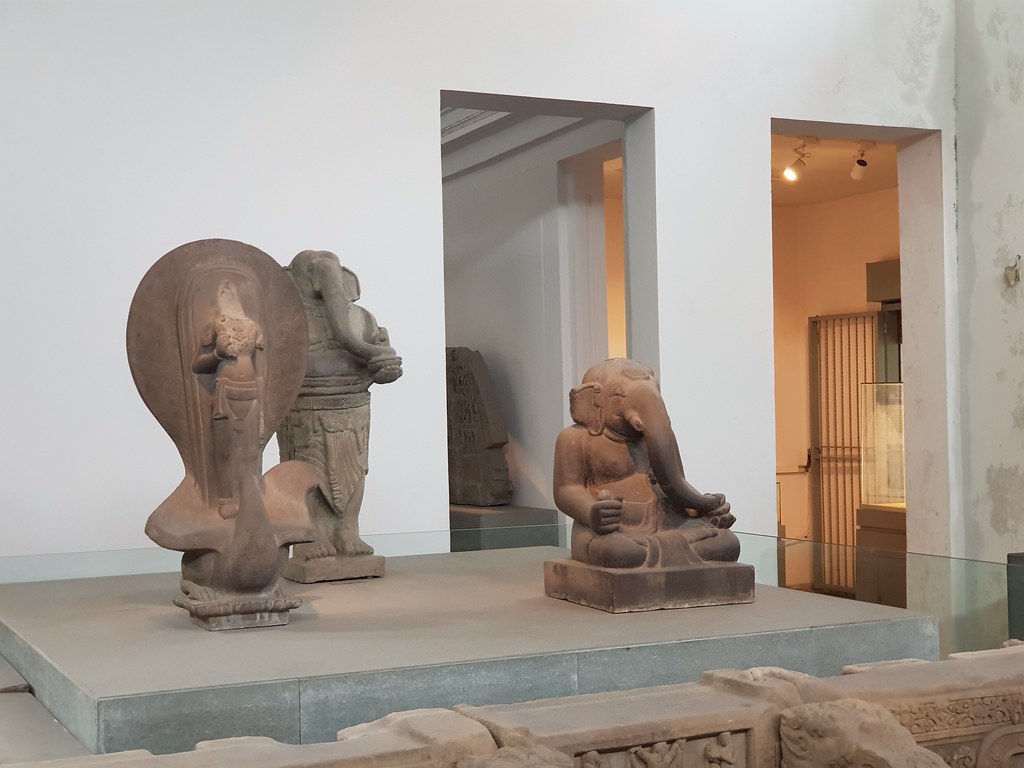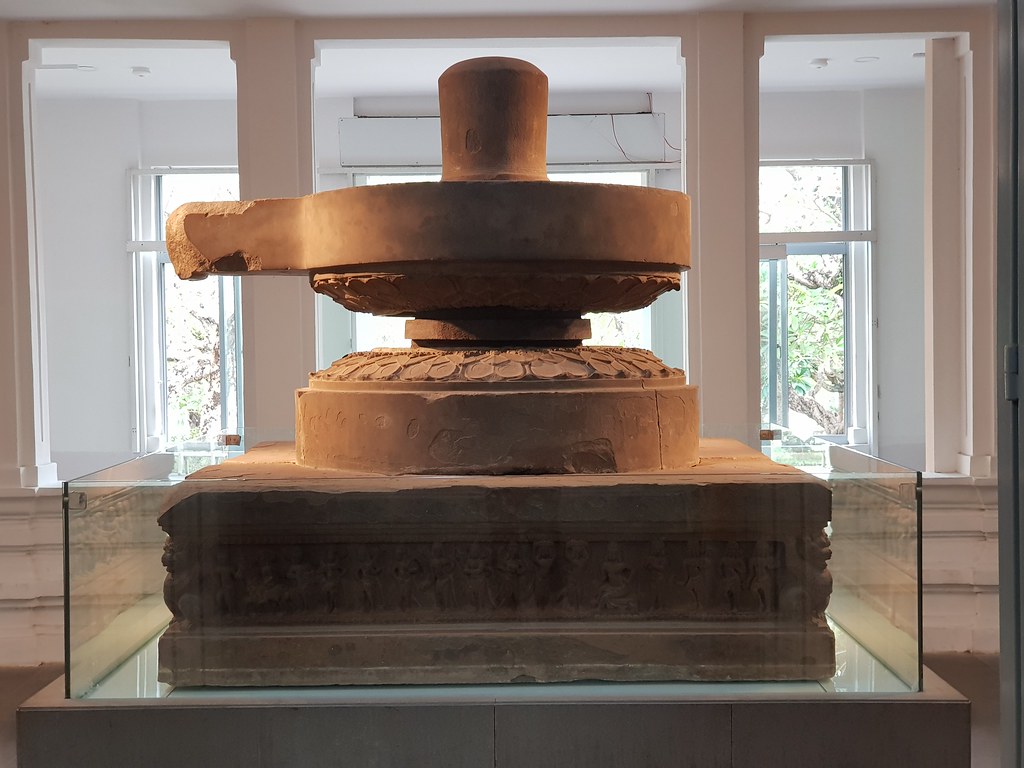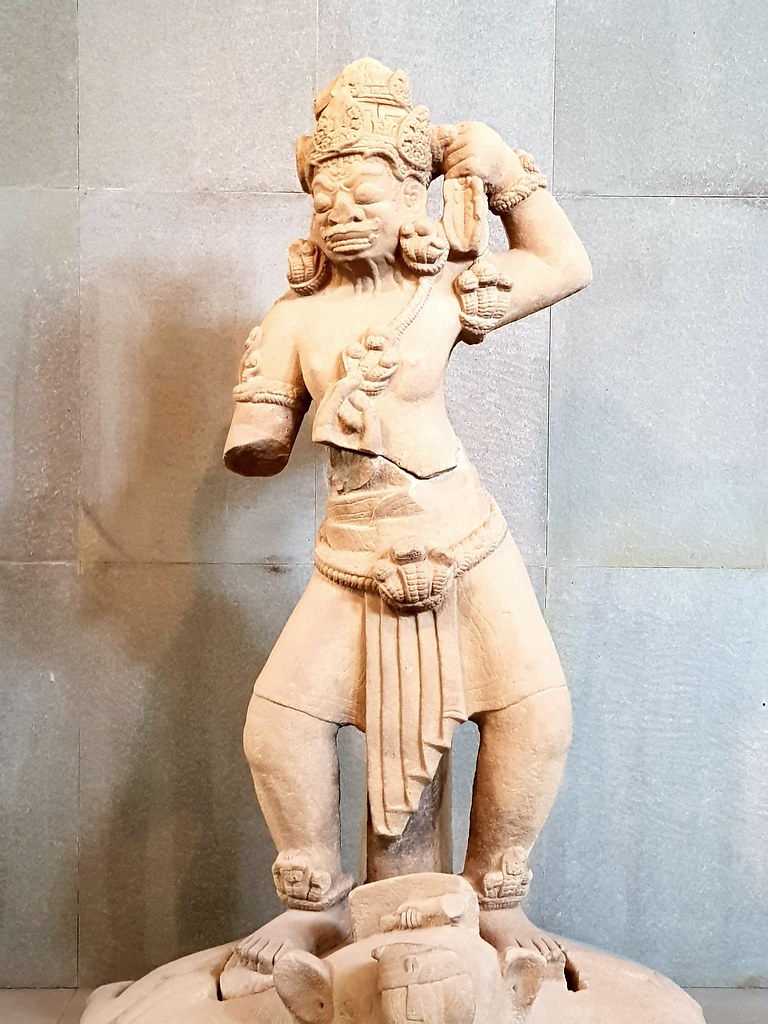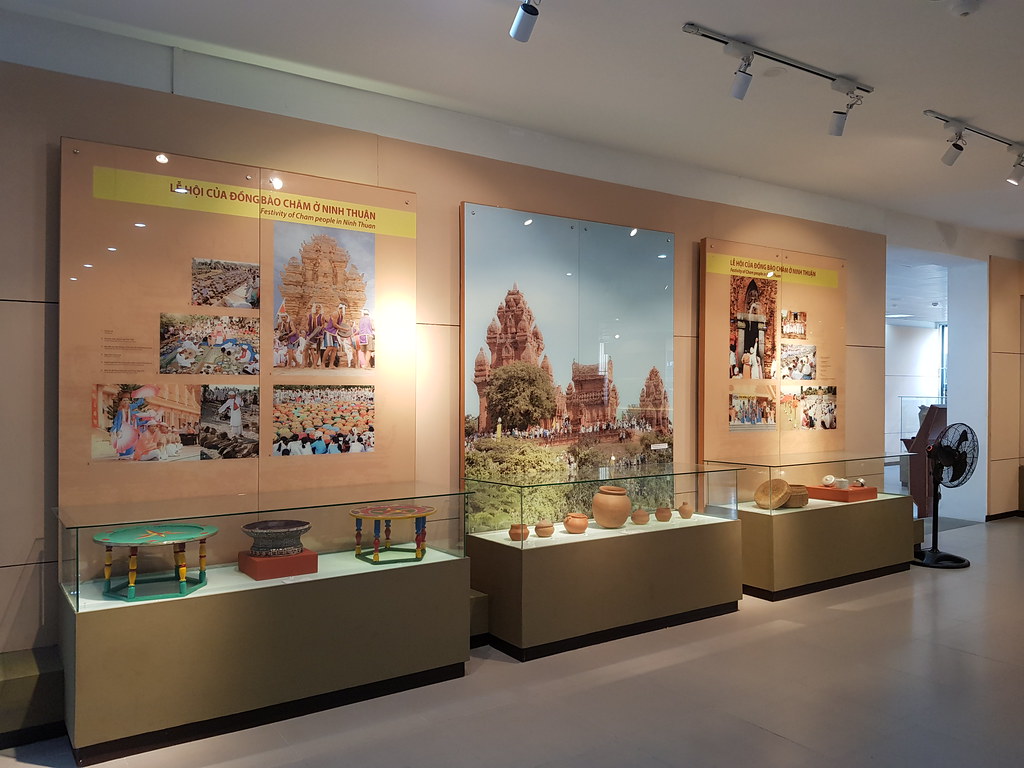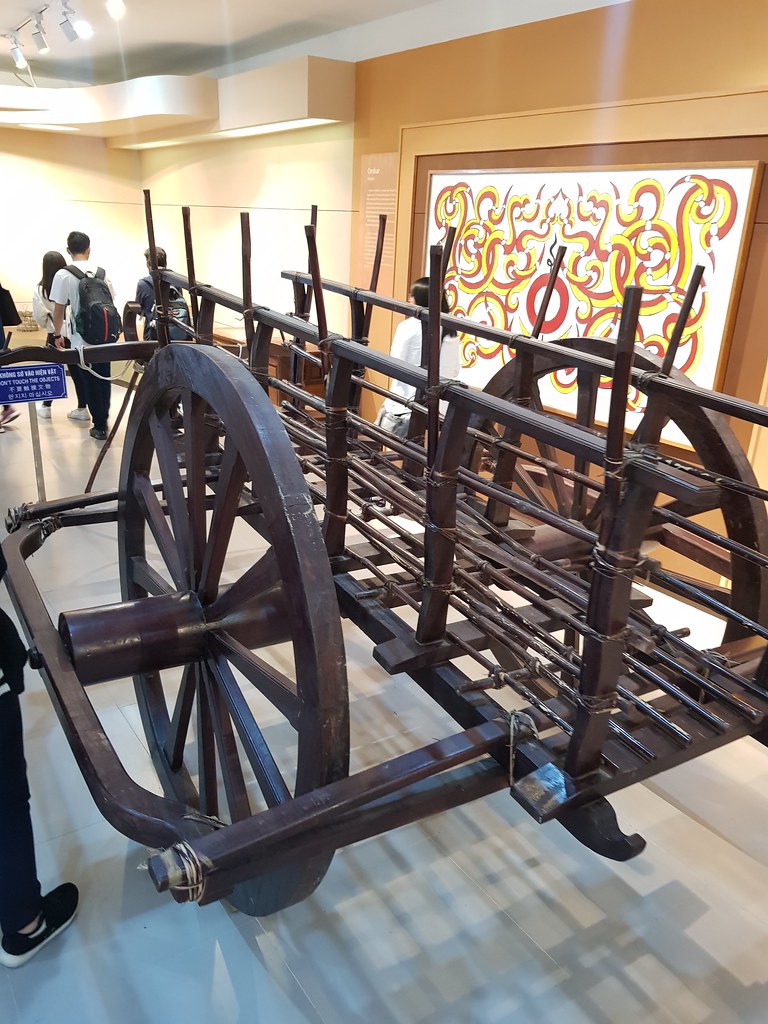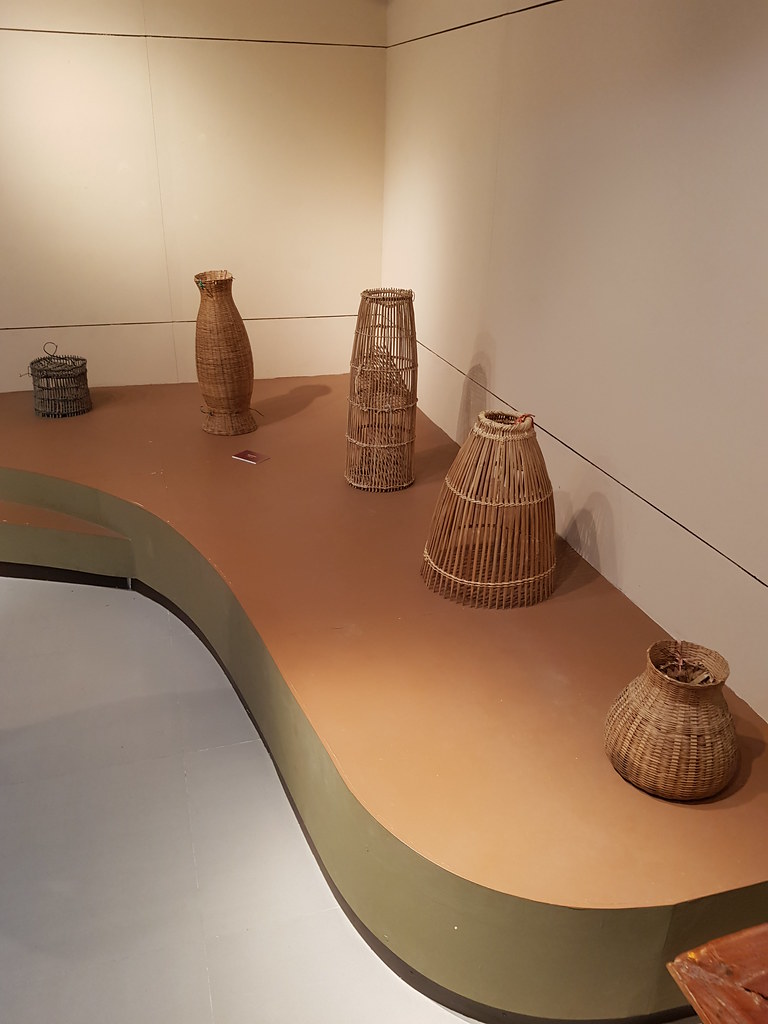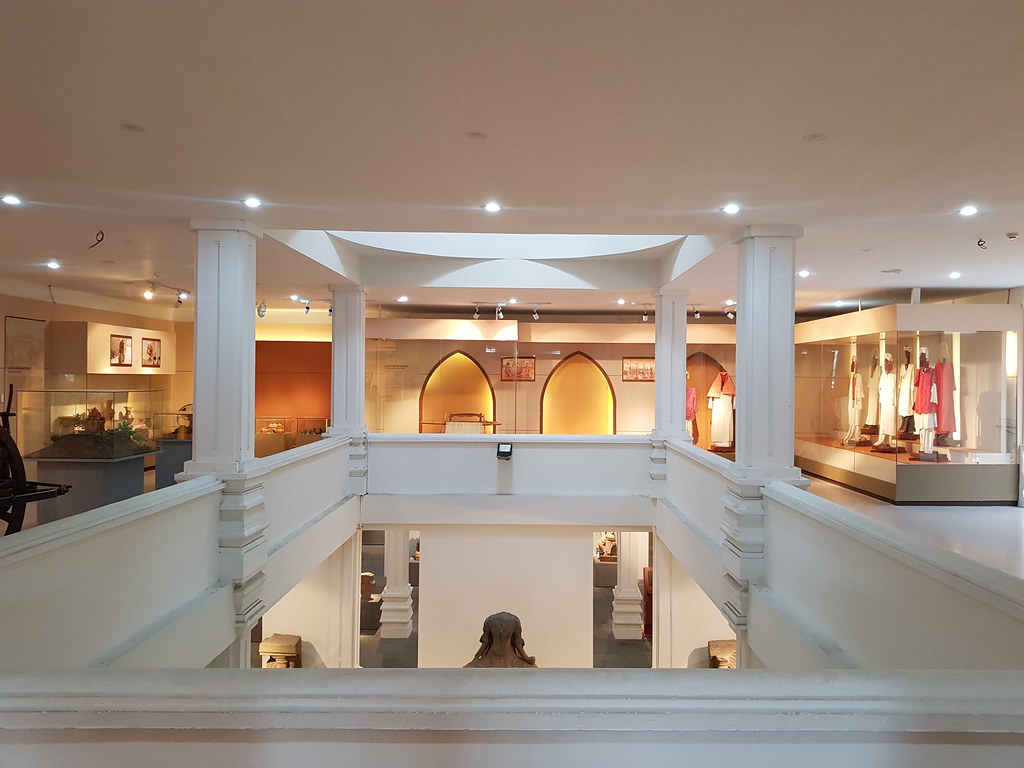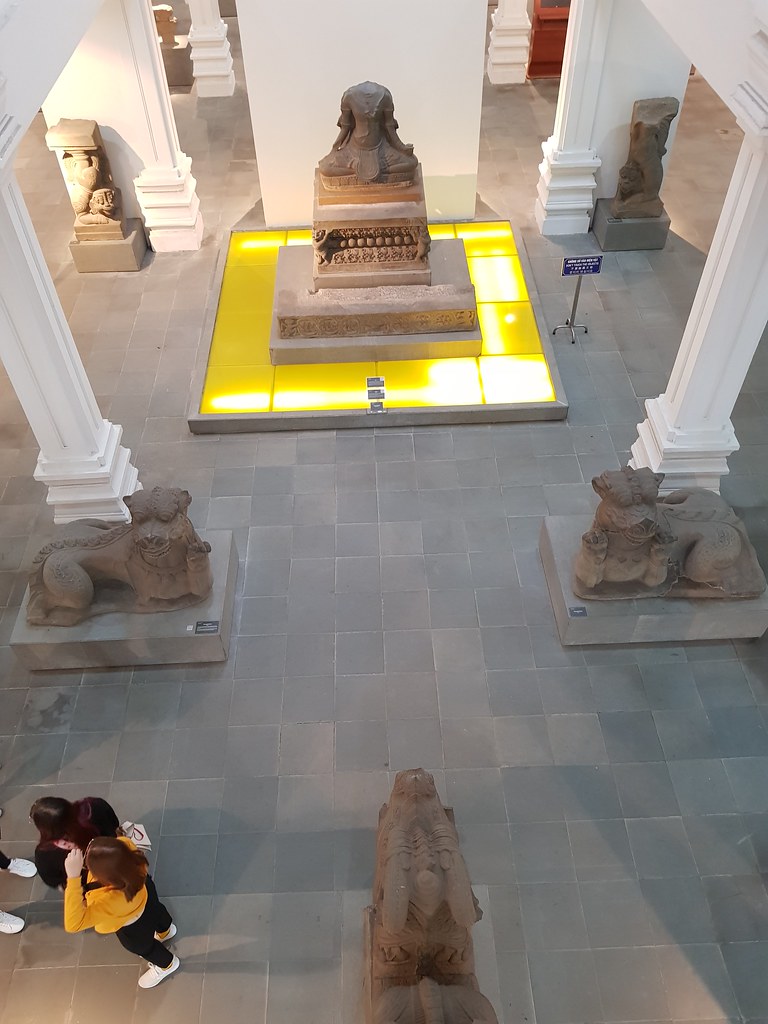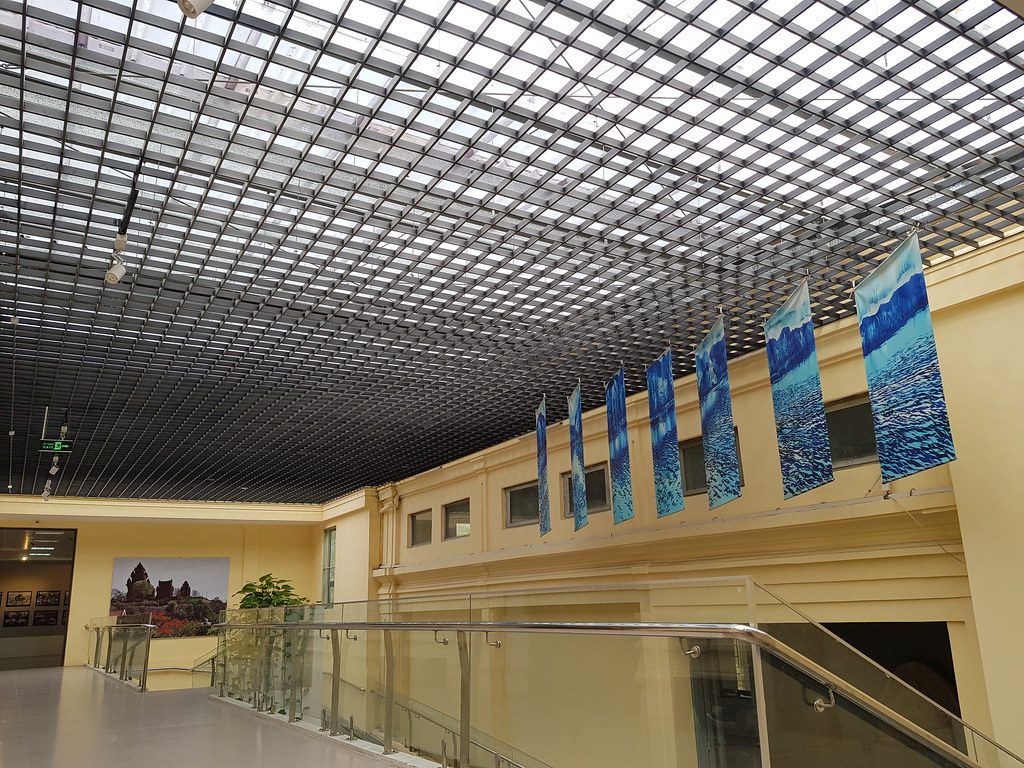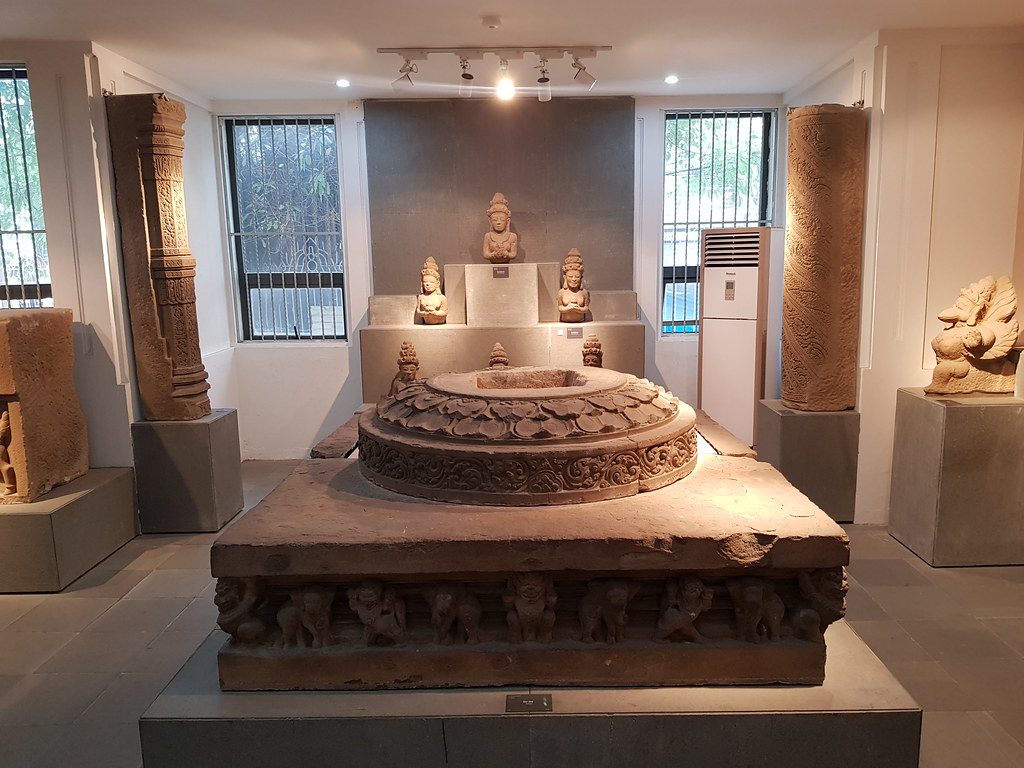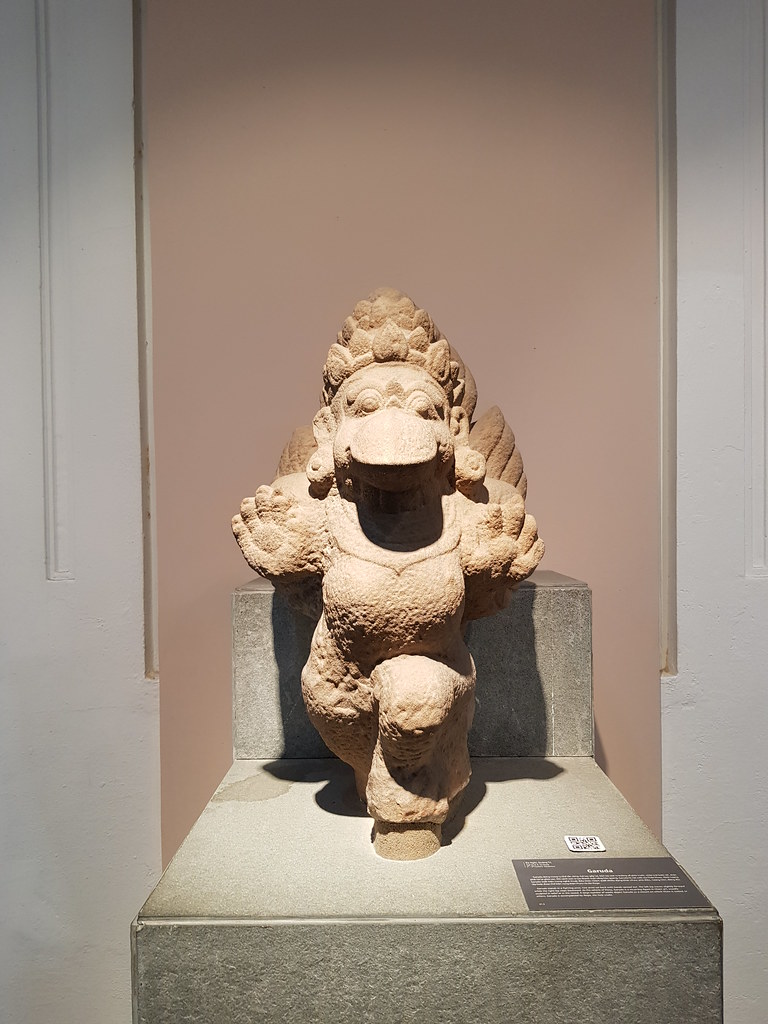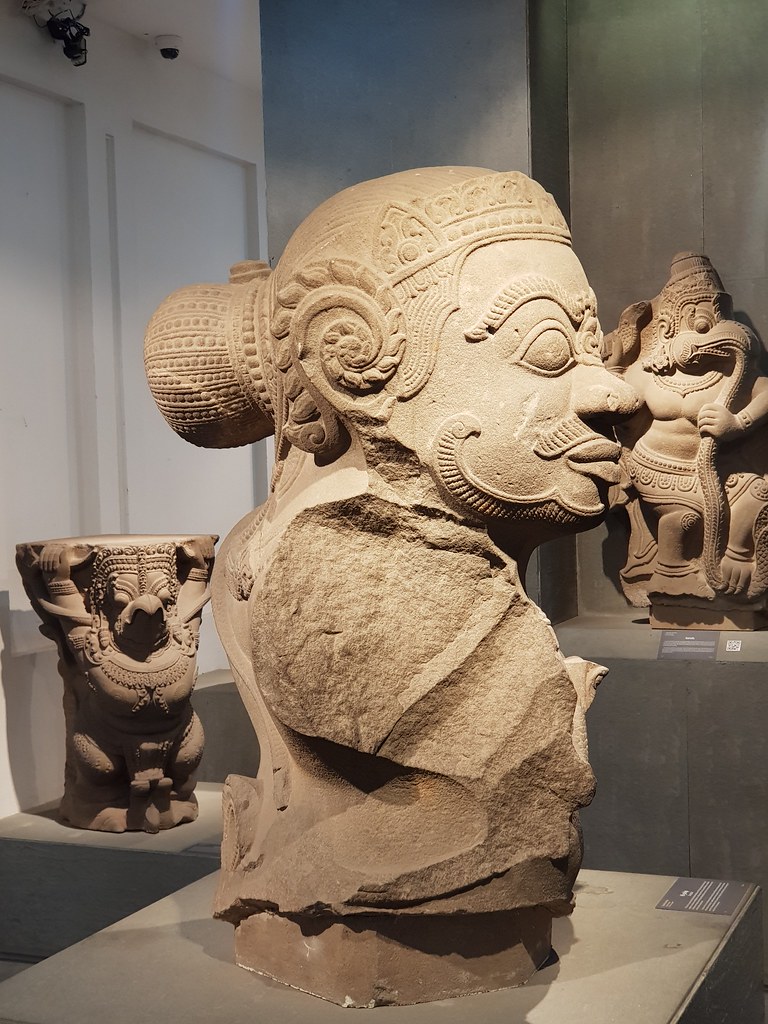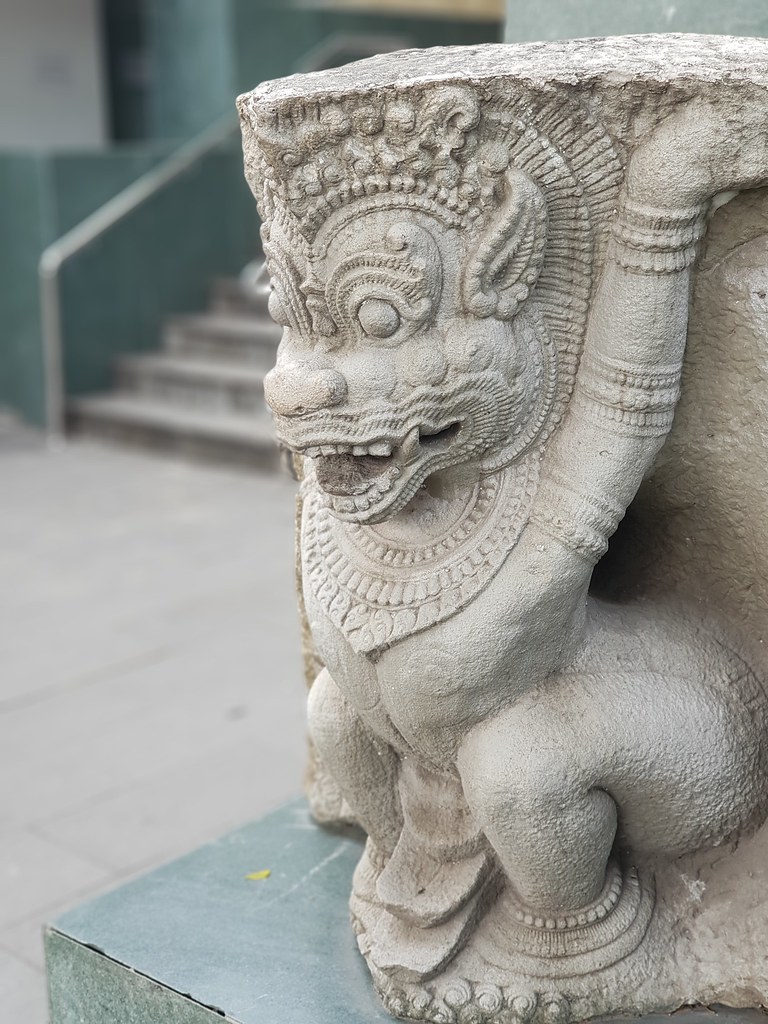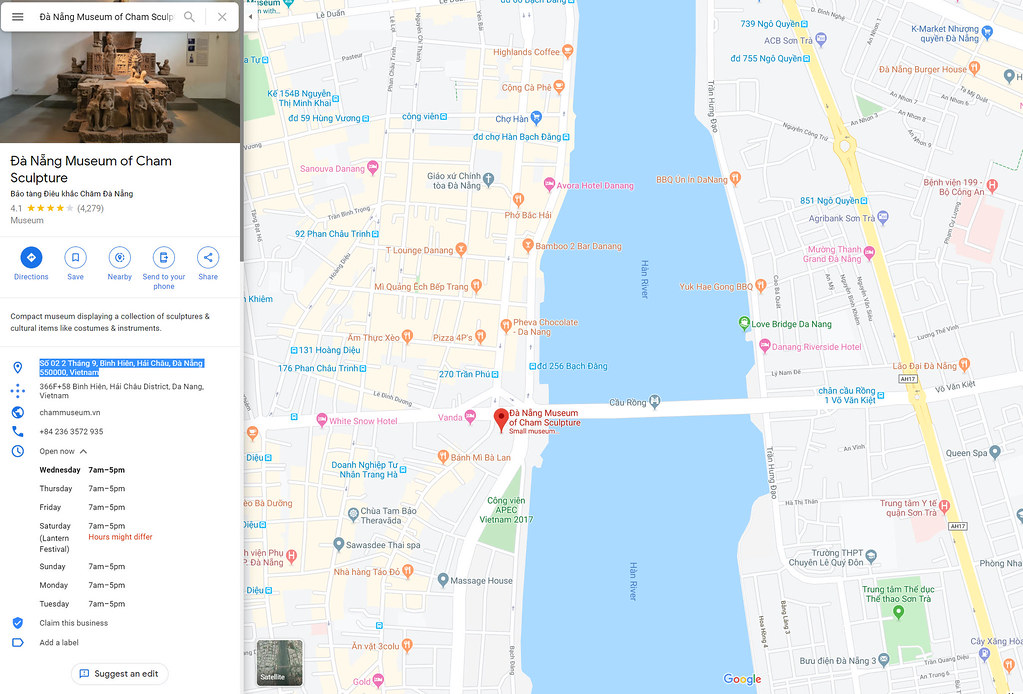10.12.2019 Tour
@ 占婆博物館(寶堂) Đà Nẵng Museum of Cham Sculpture in 岘港 Danang, Vietnam (click here to Google Map)Số 02 2 Tháng 9, Bình Hiên, Hải Châu, Đà Nẵng 550000, Vietnam
GPS Location: 16°03'37.7"N 108°13'24.0"E
Day 5 Itinerary
Day 5: Breakfast at Danang Riverside Hotel @ 岘港 Danang, Vietnam
Day 5: 占婆博物館(寶堂) Đà Nẵng Museum of Cham Sculpture @ 岘港 Danang, Vietnam
Day 5: Flight via Air Asia
Danang - KLIA2 Dec 10 12:20pm
Thoughts: The Museum of Cham Sculpture seemed to have a long history where it was first inspred as far back as 1902, the museum is now located in Hải Châu District, Đà Nẵng, central Vietnam, near the Han River (short distance from the Dragon Bridge).
The museum houses the world's largest collection of Cham sculpture, celebrating the amazing arts of the Champa culture. Champa was an Indianised civilization within the Greater India that flourished along the coasts of what is now central and southern Vietnam for roughly a one thousand-year period between 500 and 1500 AD. The original Chams were probably colonists from the Indonesian islands, who adopted as their principal vocations those of trade, shipping, and piracy. Their cities were ports of call on important trade routes linking India, China and the Indonesian islands. The history of Champa was one of intermittent conflict and cooperation with the people of Java, the Khmer of Angkor in Cambodia and the Đại Việt of what is now northern Vietnam. It was to the Đại Việt that Champa finally lost its independence. (Wikipedia)
The architecture of the Indian rock-cut temples, particularly the sculptures, were widely adopted in South Indian, and Indianised architecture of Cambodian, Annamese (Champa) and Javanese temples. The artistic legacy of Champa consists primarily of sandstone sculptures - both sculpture in the round and relief sculpture - and brick buildings. Some metal statues and decorative items have also survived. Much of the remaining art expresses religious themes, and though some pieces would have been purely decorative, others would have served important functions in the religious life of the Chams, which synthesized elements of Hinduism (especially Saivism), Buddhism and indigenous cults. The largest collection of Cham art is on exhibit at the Museum of Cham Sculpture in Da Nang. Substantial collections are housed in the Guimet Museum in Paris, the Museum of Vietnamese History in Saigon, and the Museum of History in Hanoi. (Wikipedia)
Tour today: 7 / 10 👍👍😋😋
Telephone: +84 236 3572 935
Website: http://chammuseum.vn/
Operating hours: 07:00am - 05:00pm
@ 占婆博物館(寶堂) Đà Nẵng Museum of Cham Sculpture in 岘港 Danang, Vietnam (click here to Google Map)Số 02 2 Tháng 9, Bình Hiên, Hải Châu, Đà Nẵng 550000, Vietnam
GPS Location: 16°03'37.7"N 108°13'24.0"E
Day 5 Itinerary
Day 5: Breakfast at Danang Riverside Hotel @ 岘港 Danang, Vietnam
Day 5: 占婆博物館(寶堂) Đà Nẵng Museum of Cham Sculpture @ 岘港 Danang, Vietnam
Day 5: Flight via Air Asia
Danang - KLIA2 Dec 10 12:20pm
Thoughts: The Museum of Cham Sculpture seemed to have a long history where it was first inspred as far back as 1902, the museum is now located in Hải Châu District, Đà Nẵng, central Vietnam, near the Han River (short distance from the Dragon Bridge).
The museum houses the world's largest collection of Cham sculpture, celebrating the amazing arts of the Champa culture. Champa was an Indianised civilization within the Greater India that flourished along the coasts of what is now central and southern Vietnam for roughly a one thousand-year period between 500 and 1500 AD. The original Chams were probably colonists from the Indonesian islands, who adopted as their principal vocations those of trade, shipping, and piracy. Their cities were ports of call on important trade routes linking India, China and the Indonesian islands. The history of Champa was one of intermittent conflict and cooperation with the people of Java, the Khmer of Angkor in Cambodia and the Đại Việt of what is now northern Vietnam. It was to the Đại Việt that Champa finally lost its independence. (Wikipedia)
The architecture of the Indian rock-cut temples, particularly the sculptures, were widely adopted in South Indian, and Indianised architecture of Cambodian, Annamese (Champa) and Javanese temples. The artistic legacy of Champa consists primarily of sandstone sculptures - both sculpture in the round and relief sculpture - and brick buildings. Some metal statues and decorative items have also survived. Much of the remaining art expresses religious themes, and though some pieces would have been purely decorative, others would have served important functions in the religious life of the Chams, which synthesized elements of Hinduism (especially Saivism), Buddhism and indigenous cults. The largest collection of Cham art is on exhibit at the Museum of Cham Sculpture in Da Nang. Substantial collections are housed in the Guimet Museum in Paris, the Museum of Vietnamese History in Saigon, and the Museum of History in Hanoi. (Wikipedia)
Tour today: 7 / 10 👍👍😋😋
Telephone: +84 236 3572 935
Website: http://chammuseum.vn/
Operating hours: 07:00am - 05:00pm
at the Entrance to the Museum
History Lesson
The Museum (section 1)
The Museum (section 2)
The Museum (section 3)
The Museum (section 4)
The Museum (section 5)
Day 5: 占婆博物館(寶堂) Đà Nẵng Museum of Cham Sculpture @ 岘港 Danang, Vietnam
